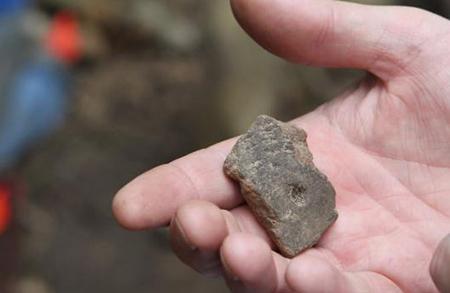Beneath Our Feet: Cedar Valley Archeology
This exhibit is composed of four five sections: Prehistory of Iowa, History of Hartman Reserve, UNI Archeology Field School Excavation, Archeology Lab, and Interpretation.
The Prehistory of Iowa section will present illustrations and information for four periods in Iowa history: Paleo Indian, Archaic, Woodland, and Mississippian. Artifacts will complement and support the illustrations and will be selected from the McCulley Family Lithic Collection and the Iowa State Archeology Collection. Also included will be research data collected by a former UNI student and Museum Collections assistant, John Hahn.
The Prehistory section will feature the centerpiece of the exhibit, a true-to-life model wigwam. The wigwam will be constructed by UNI Museum exhibit preparator and one of the Museum’s collaborative partners in this exhibit, Hartman Reserve Nature Center. The wigwam will have a circular, 12’ footprint, a height of 5’6” at the peak, and will be installed on a handicapped-accessible, 4” platform. The framework for the wigwam will be constructed of tree saplings. To reduce the use of natural resources, and to minimize the risk of introducing insects to the museum interior, the covering for the wigwam will be a mix of cardboard, screen, and paper pulp that will be crafted to look like sections of bark removed from elm trees.
The wigwam will contain hides from the Museum’s Educational collection and personal collections, and also be furnished with recreated tools, grass mats, pottery, and containers. Also inside the wigwam will be a computer monitor that will display a slide show of relevant historic data and illustrations on how prehistoric Iowans might have lived. There will also be a narrative sound component to the slide show. Outside of the wigwam and on the platform will be a reconstruction of a fire pit. Evidence of fire pits have been found at Hartman Reserve excavations. The exhibit fire pit will display reconstructed fire rock, tools, points, and pottery shards. Also on the platform will be two interpretive panels and a sapling structure, stretching a deerskin.
The History of Hartman Reserve section has dual purpose: most of the photos and text panels that will be produced for the exhibit will be on permanent display at Hartman Reserve after the exhibit closes. In 1938, John Hartman helped purchase the initial parcel of land that was to become Hartman Reserve. The Hartman section will display photographic and map enlargements, published material, artifacts, and correspondence by John Hartman. A history of the Reserve, including land purchases and use of the land (prehistoric through present) will also be presented.
The third section of the exhibit, the Field School section, will focus on the students who participated in the 2010 Field School excavation under the direction of another of the Museums’ partners, UNI Professor Don Gaff. This section will include information and photo enlargements of UNI students excavating on location at Hartman Reserve during the summer of 2010. Explanation of the process and excavation techniques will be examined, and tools used in excavation will be on display. The featured part of this section will be a custom-made, plexiglass & wood case that will display and store artifacts uncovered in the 2008-2010 Field School excavations. After the close of the exhibit at UNI Museums, the case and some of the photo enlargements will be permanently installed at Hartman Reserve.

Museum Objects in this Exhibit
No objects could be found matching this description.
Objects may have been recently deaccessioned; use this site's search function to view similar objects.
|
|
